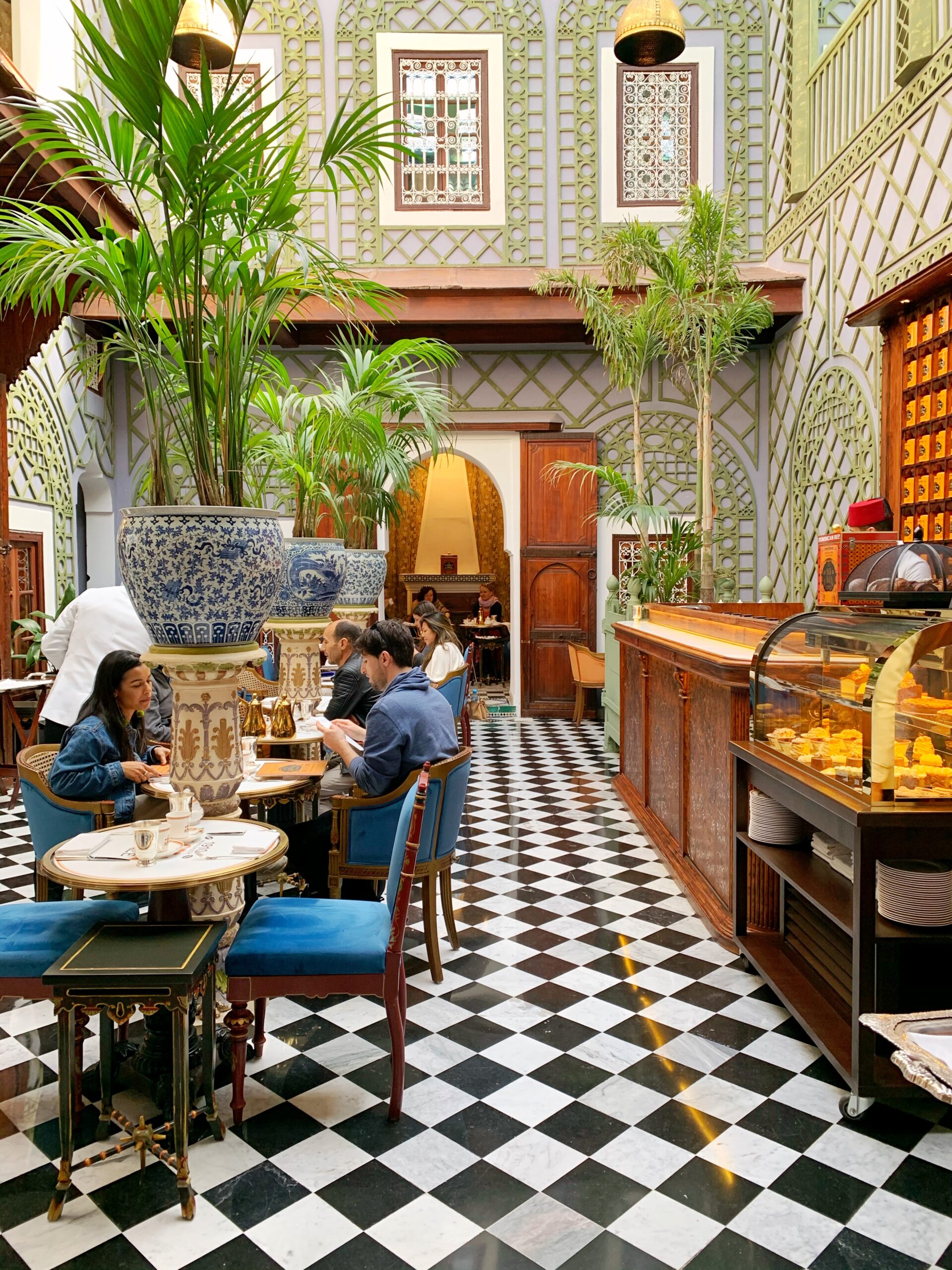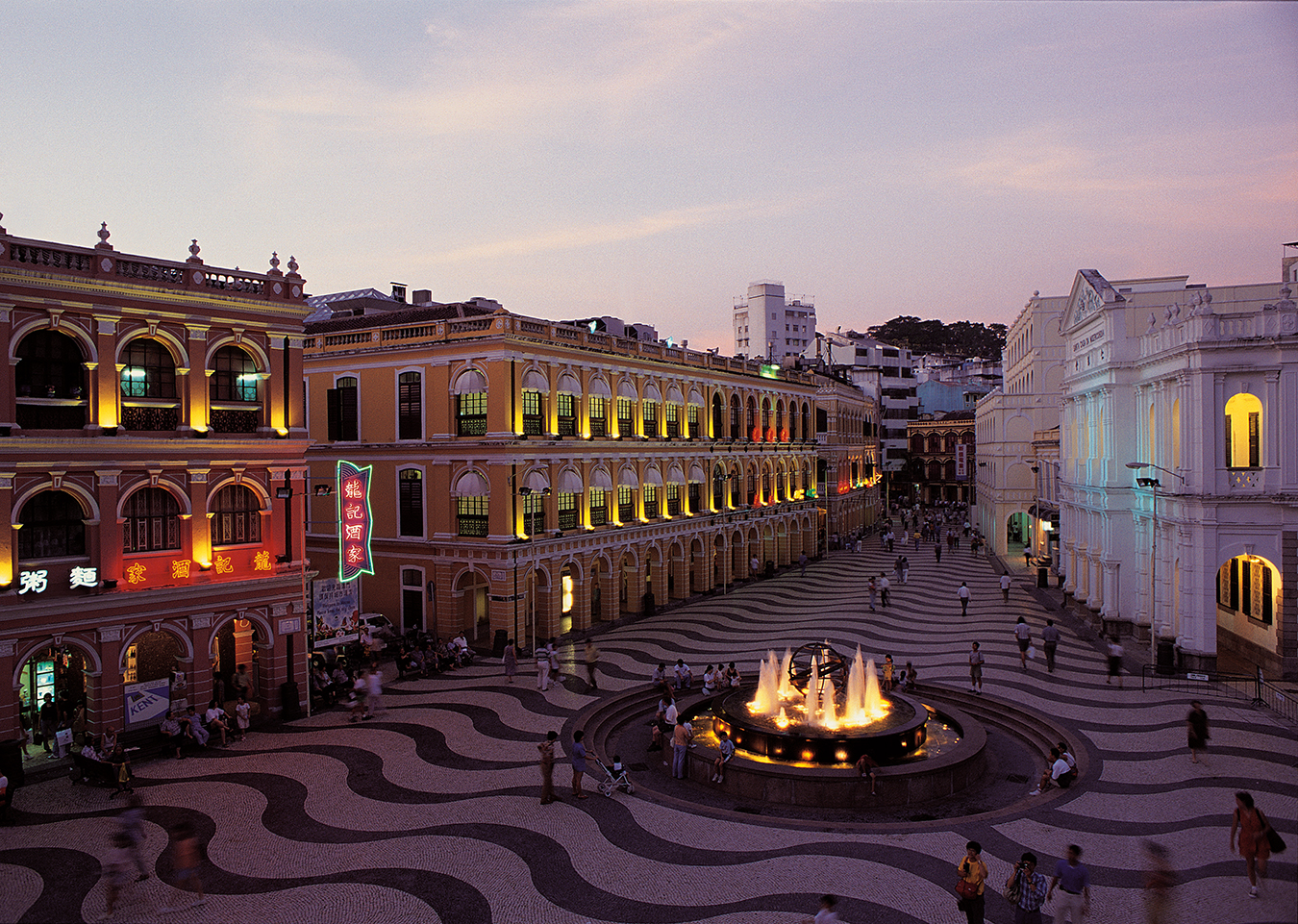An Oasis in Marrakesh
Oberoi’s first foray into Morocco opens in Africa’s capital of culture.

At the end of a narrow lane, where the covered souk opens up to the sky, shops on all sides proudly display bohemian pillows, carpets piled high, leather ottomans, glowing brass lamps, hand-painted pottery, sandals and slippers in every shade of the rainbow. There are over 3,000 shops and stalls in the warren-like maze that forms the souks of Marrakesh. In every direction, there are colourful objects to look at, the voices of shopkeepers beckoning customers in, people walking by, the occasional motorbike squeezing through the crowd. You’re bound to get lost, but that’s half the fun. In Djemaa el Fna, the main square, musicians vie for your attention while people sell argan oil, fruit, nuts, and street food. The sensory overload is one of the things that makes Marrakesh so thrilling to visit.

The calm oasis of the new Oberoi Marrakesh is a welcome contrast to the chaos of the souk. This is the Indian luxury brand’s first foray into Morocco; the resort was built on a farm in the style of a Moroccan palace, with reddish-pink buildings, 28 acres of manicured grounds, and Mediterranean flora. It took a team of 600 craftsmen five years to build the lobby with its intricate carvings, and the courtyard featuring zellige tiles and a pool of water that recalls the fountains typically found in ryads, traditional Moroccan homes. The architect, Patrick Collier, drew inspiration from the 16th-century Medersa Ben Youssef, which is one of the finest examples of Moroccan architecture. The walk from the main building to the private villas passes under an arbour of olive trees, past fragrant rose bushes and rows of aloe vera, with views of the Atlas Mountains in the distance. Located about 25 minutes outside the medina, the resort takes a bit of effort to get to, but it’s worth it.


The majority of the Oberoi’s 84 keys are villas, each with its own pool. They combine traditional design elements, like dark wood furniture upholstered in cheery yellow, with Moroccan touches. A niche with intricate Moroccan carvings stands behind the bed. Zellige tiles adorn the entryway. The luxe marble bathrooms have custom sinks with gold patterns. A terrace in the back has a pool, lounge chairs, and a table where you can enjoy room service.
You could easily spend a whole day on the property, lounging by the pool, enjoying a light lunch at the poolside restaurant Azur, indulging in a traditional hammam at the spa, savouring Moroccan specialties at the fine dining restaurant Siniman, and a nightcap in the cozy bar, Vue. In addition to Mediterranean fare, the all-day restaurant Tamimt serves a selection of Indian dishes like saag panneer and dal makhani that reflect Dehli-based Oberoi’s roots.


Exploring Marrakesh requires a bit of extra effort because the most alluring places are hidden behind closed doors. Sure, you can wander through the souks and stroll the winding streets of the medina, but to appreciate the city’s mysterious beauty, you have to seek out the ryads, museums, and restaurants that aren’t so obvious from the outside.
Like Dar el Bacha, which houses the Musée des Confluences. Permanent exhibits focus on Moroccan culture, and recent temporary exhibitions displayed Yves Saint Laurent’s caftan collection and photographs by perfumer Serge Lutens. Zellige tiles decorate columns and niches, and orange trees blossom. But unlike the Jardin Majorelle, ground zero for tourists visiting Marrakesh, Dar el Bacha has just a handful of visitors.
Through a doorway, Bacha Coffee feels like going back in time to the French colonial era, with waiters in white jackets and red fezzes serving single origin coffee in gold pots.

Just down the street is Le Jardin Secret, a 19th-century ryad with two beautiful gardens. For a few dirhams, you can visit this tranquil oasis and soak up some rays of sun while relaxing on a bench. The larger of the two gardens is paved with green glazed tiles and features a painted wooden pavilion that shelters a small marble fountain. A staircase in the main building leads up to a rooftop terrace, where you can sip a refreshing drink with views of the garden below. An exhibit inside tells the story of the ryad and its past owners, including the chamberlain of the Sultan Moulay ‘Abd-al-Hafid, who ceded sovereignty of Morocco to France in 1912.
The best way to discover the city’s hidden gems is to take a sidecar tour with Marrakech Insiders. The Sadaka tour will take you through the medina and the palm grove as you ride to Dar El Sadaka, the whimsical 25-acre estate of French artist Jean-François Fourtou. Surprise after surprise awaits as you explore the grounds and villa dotted with life-size sculptures of ants, giraffes, monkeys, and donkeys. Enter the trippy “House Fallen from the Sky,” an art installation that looks like a house plopped upside-down in a field, but grasp onto whatever you can—you might feel dizzy and disoriented. Finish the tour with lunch at the giants’ house filled with larger-than-life furniture.

Fourtou is just one of the many artists who call Marrakesh home. Visiting his estate and other hidden gems like Dar El Bacha and Le Jardin Secret, it’s not hard to see why the city has been named Africa’s first-ever capital of culture. The French, the Berbers, the Spanish, and the Arabs all contributed to Morocco’s heritage and continue to leave their mark today. As one of the four imperial cities founded in the 11th century, Marrakesh is a melting pot. It’s a city that begs to be savoured time and again.

________
Never miss a story. Sign up for NUVO’s weekly newsletter here.




